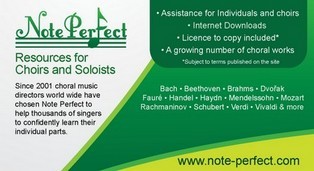In dulci jubilo BWV 729 (Bach)
Organ
Johann Sebastian Bach
View or download the score
Sachin Gunga, Wakefield Cathedral
Michael Keen, Holy Trinity Church, Hounslow, UK
In Dulci Jubilo (English “In Sweetest Rejoicing” but most commonly arranged as “Good Christian Men, Rejoice”) is a traditional Christmas Carol.
The original words, a macaronic alternation of Medieval German and Latin, is thought to have been written by the German mystic Heinrich Seuse circa 1328.
According to folklore, Seuse heard angels sing these words and joined them in a dance of worship. The first stanza is:
Original text
In dulci jubilo,Nun singet und seid froh!Alle unsre WonneLiegt in praesepio;Sie leuchtet wie die SonneMatris in gremio.Alpha es et O!
English translation
In sweet rejoicing,now sing and be glad!All our joylies in the manger;It shines like the sunin the mother’s lap.(You are the) alpha and omega!
English versions
There have been translations of the Latin/German poem. A popular version by Robert Lucas de Pearsall (1837) retains the Latin phrases and substitutes English for German:
In dulci jubilo,Let us our homage show!Our heart’s joy reclinethIn praesepio;And like a bright star shinethMatris in gremio.Alpha es et O!
An English-only translation was produced in 1853 by John Mason Neale.
An instrumental arrangement of the Pearsall version by English musician Mike Oldfield, “In Dulci Jubilo”, reached number 4 in the UK in January 1975. The rock band Mannheim Steamroller also recorded a version for their 1988 Christmas album A Fresh Aire Christmas, using a dulcimer as the main instrument. Norwegian singer Sissel Kyrkjebø recorded a Kjetil Bjerkestrand arrangement of the song with the Mormon Tabernacle Choir on the Grammy Award-nominated Christmas album “Spirit of the Season”.
Influence in music
J.S. Bach wrote a chorale prelude around this carol for organ (BWV 729), and it is traditionally performed as the first organ voluntary at end of the Festival of Nine Lessons and Carols at King’s College, Cambridge. This voluntary was first introduced to the service in 1938 by organ scholar Douglas Guest.
Franz Liszt included the carol in his piano suite Weihnachtsbaum in the movement entitled Die Hirten an der Krippe.
This article is licensed under the GNU Free Documentation License. It uses material from the Wikipedia article "Metasyntactic variable".
Comments
Please make comment on the score and music here.
- Keep to the topic of the music on this page. Be polite, comments are moderated
- Tell us where you have used this music and if your performance is published on the internet, please put a link to it in the website field
- Give performance advice/suggestions
- Ask others questions about performance techniques
- Please do not make requests for music on this page
- Your email address is not published
1
review
RA
22 Dec 2022
Wonderful. Thanks for this. However, I think there is an error in the eighth bar from the end. The middle (third voice) part should read D (semibreve tied to minim) then C sharp (minim), not E and then D (in the same rhythm). The latter appears to be common in online versions but reputable published versions print the more plausible D then C sharp.
Our sponsors
Other Organ Music
